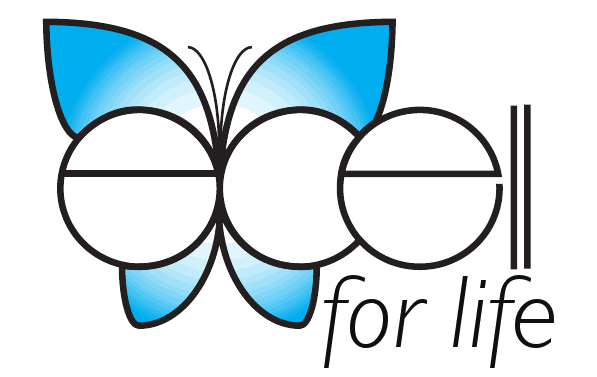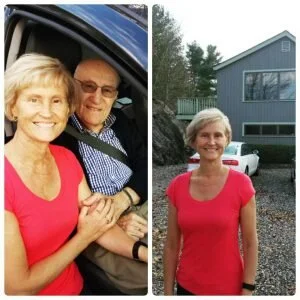Pulse Treatment for Lyme & Co-infections – Learning from Dr. Steven Phillips
Dr. Steven Phillips is an Internist from Wilton, CT and top Lyme disease and co-infections specialist. He has helped thousands of patients recover from many struggles with relapsing-remitting MS and his elderly father with heart failure. We often also call Lyme Disease & Co-infections MCID (Multiple Chronic Infectious Disease). After researching Dr. Phillips (who belongs to ILADS, the International Lyme and Associated Disease Society) and waiting seven months for an appointment, I took my father Don to see Dr. Phillips last November. Don has had up and down but gradual downhill weakness which intensive traditional medicine has not been able to improve. Because of this and some testing, I realized chronic infection could be a root cause for my Dad.
First Visit with Dr. Phillips
Dr. Phillips spent two hours with Don, going over detailed history and examination. He ordered additional infection testing and other root-cause testing. Nothing came back conclusive, which is common in MCID patients. This fact keeps the IDSA (Infectious Disease Association of America) from acknowledging the Lyme & co-infection epidemic. These chronic infectious diseases are slow growing and hide from our immune system intracellularly. Therefore reliable testing is extremely challenging and currently unavailable. So we really must rely on history, ruling out other problems, and watching response to treatment.
Pulse Treatment for Lyme Disease
Don’s treatment over the past six months has been pulse treatment of very gradual increasing doses of tetracycline, and then adding Liposomal Oil of Oregano and Diflucan. We have a phone visit about every two months. In November Dad was using a cane and walker, and after three months he was able to play most of 9 holes of golf twice a week. Recently Don has gotten weaker again, so we are researching other causes and adjusting his infection medicines with Dr. Phillips.
In his research and treatment of thousands of patients with MCID, Dr. Phillips finds pulsed treatment generally works best and results in less antibiotic exposure (and Dr. Jemsek from DC also favors pulse treatment). His mainstay of treatment is Tetracycline to the dose of 750mg twice daily (which is about seven times higher than you can dose doxycycline). He eventually adds other antibiotics, Diflucan, Mepron, or liposomal herbals to achieve powerful healing. He frequently sees a resolution of brain lesions in his MS patients and people with memory loss. Each patient and their immune system and exposure varies, so treatment is adjusted dependent upon the person and their response.
Highlights from Dr. Phillips Frequently Asked Questions handout:
Do you think I have Lyme or another tick-borne disease?
“If I’m offering you antibiotics, then I believe that it’s more likely than not that you have Lyme disease and/or another vector-borne illness. Until testing becomes foolproof, and it’s very far from that now. These diagnoses are made clinically, which means ‘based upon symptoms’. Laboratory tests serve as support for the diagnosis, but the diagnosis doesn’t hinge on the test in isolation. The presence of a Herxheimer reaction can serve to further strengthen to further the diagnosis.”
Why Tetracycline and not Doxycycline?
“I prefer Tetracycline because the standard dose is seven times higher than Doxy, and it has been published that Tetracycline has some effect against Lyme disease persisters where Doxy has not. Tetra causes far less sunburn than Doxy, and less vertigo, GI irritation, thyroid dysfunction, and skin & tooth pigmentation. It is still important to note that a minority of patients do better with Doxy or Minocycline.”
Why don’t you use IV antibiotics?
“Published studies comparing IV Rocephin to oral Doxycycline demonstrated that IV was not better, and in my experience in practice I also saw this, and risks of IV are higher.”
What are persisters?
“Persisters is a term used for subpopulations of Lyme bacteria (B. burgdorferi) that survive against antibiotics in a test tube, such as Doxy, Amoxicillin, and Rocephin which are recommended by IDSA to treat Lyme. Tulane, Northeastern, and Johns Hopkins Universities have all published research documenting that B. burgdorferi persisters survive the antibiotics that have long been thought curative by some doctors.”
If persisters survive, then how can Lyme be cured?
“We are doing research on better combinations of antibiotics that have activity against persisters in test tube and these will be studied in people. Northeastern University has shown that pulsed antibiotic therapy can kill persisters in the test tube. I’ve used pulsing, which means going on and off antibiotics at predetermined intervals, in my practice for years and feel it’s very helpful in shortening antibiotic durations while increasing efficacy.”
What’s a Herxheimer?
“A Herx is a flare of prior or new symptoms in association with beginning an antibiotic therapy in certain infections such as Lyme disease. They occur in different time points based upon the drug used and infection(s) present. They can range from mild to severe (such as flu-like symptoms, headaches, eye pain, muscle and joint pain, fatigue, sleep disturbance, tingling, numbness, psychiatric symptoms).
A Herx is often described as a die-off reaction when bacteria are being destroyed, but I believe that this is an oversimplification and not entirely accurate. If this were the case, then how could a chronic Lyme patient have Herx after Herx over many treatment cycles? How many bacteria could there be in such a patient to cause so many repeated Herx? Wouldn’t they be destroyed already if that description were accurate? I believe that Herx in chronic Lyme patients are due to the combination of a relatively small amount of bacterial destruction and a relatively larger amount of blebbing.”
What is blebbing?
“Blebs are like microbial dandruff, or more aptly put, like decoys. They are small particles that are shed from the surface of both Lyme and Bartonella. To the immune system, they appear the same as the intact organism. In the case of Lyme, they have been more researched, as there has been very little good research in Bartonella yet. They occur as part of a microbial stress response and induce immune dysfunction in the host by causing excess and abnormal stimulation which eventually results in anergy (failure of the immune system to properly recognize the infection).
I believe that blebbing can occur during a Herx and then again transiently upon discontinuation of the antibiotics. If blebbing does occur upon cessation of antibiotics, it provides clinical evidence that the infection is still present, even if symptoms subsequently settle down, which they usually do in about a week or so after blebbing begins. If taking pulsed antibiotic therapy, I believe it’s best to wait until the blebbing has settled down before starting the next pulse of antibiotics, which is why I space the pulses 2-3 weeks apart, depending on the regimen and the respective half-lives of that antibiotics.”
More information on pulsed antibiotics:
“Pulsing means going off and on antibiotics in a predetermined manner, rather than taking continuously. Published research in the test tube with Lyme demonstrates that 1 application of Rocephin does not eliminate persisters, but that pulsed therapy does. Some published case reports describe chronic Lyme responding to pulsed antibiotics when continuous treatment has failed. Of note, spirochetes such as Lyme do not develop material resistance to antimicrobials by their intermittent application.”
What herbals do I recommend?
“Although I think herbals can be helpful, I usually try to hold off on additional variables when first starting antibiotics. Herbals are less well-studied than traditional Western medicine, and they do require safety blood testing. Herbals that are shown to be effective in the test tube against Lyme are grapefruit seed extract, banderol, samento, and stevia extract (from Nutrramedix). For Bartonella herbals are largely anecdotal, but I believe artemisin is effective and maybe houttuynia. Components o foil of oregano have been published to be effective against Brucella (closely related to Bartonella).
Will I get better?
“The majority of my patients rate themselves as 90% back to normal after treatment. The average duration of antibiotic therapy is usually 9 months of antibiotics over 12 months of time. It is important to understand that healing from Lyme can feel like two steps forward and one step back. This is to be expected, so don’t be discouraged.”
Will I relapse when antibiotics are stopped?
“Many patients have recurrent symptoms between the first several pulses, which is to be expected. With continued pulses, most patients can go off antibiotics and be stable without them. A small minority of patients have a chronic relapsing course after treatment, and then we re-evaluate them and restart treatment (often with a different combination of medicine & herbals).
Many thanks to Dr. Phillips for his great expertise, and our awesome God and Holy Spirit for His continued leading and learning and healing!

